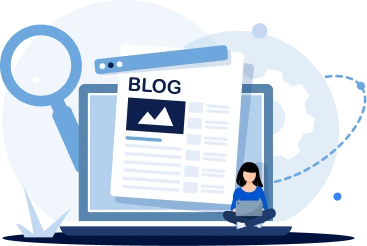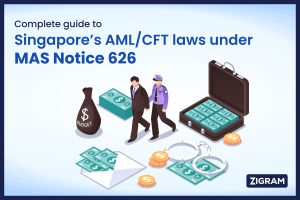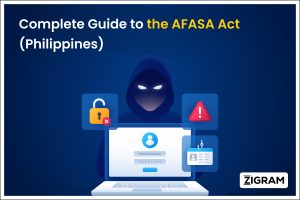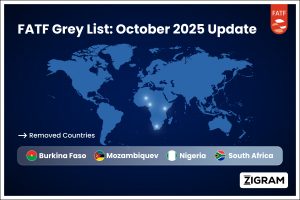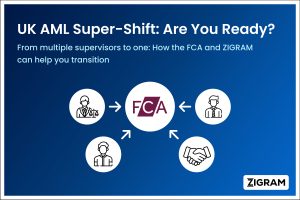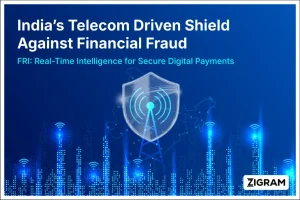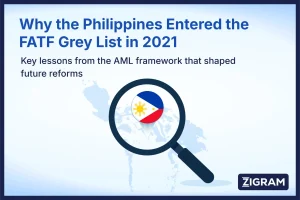Table of Contents
In an increasingly globalized financial environment, safeguarding the integrity of financial systems is paramount. Money laundering and terrorism financing not only destabilize economies but also undermine national security and public trust. The Philippines has seen several cases where non-governmental and charitable organizations were exploited to launder money or finance terrorism. Under pressure to meet Financial Action Task Force (FATF) standards and exit the 2021 grey list, authorities stepped up investigations of NGOs suspected of funding illicit activities. [1]
Notably, at least 18 foreign NGOs were identified in 2021 as channeling funds to local insurgent groups, and four cases were filed against domestic charities alleged to funnel money to communist terrorist organizations. [2][1]
These incidents highlight how the non-profit sector, valued for humanitarian aid and development, can be abused for illicit finance when proper controls are lacking.
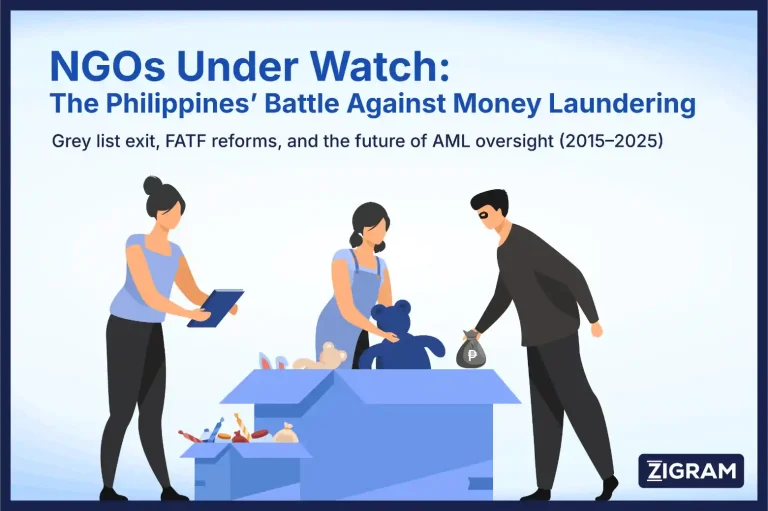
Major Cases of Money Laundering and Terrorism Financing via NGOs in the Philippines
The Napoles “Pork Barrel” Scandal: A Landmark Case of Money Laundering via NGOs
A prominent money laundering scandal illustrates NGO misuse. In the early 2010s, businesswoman Janet Lim Napoles controlled several shell NGOs as “temporary repositories” for legislators’ pork-barrel (PDAF) funds. [3]
Investigators found that millions in public funds were deposited into these NGOs and quickly withdrawn in cash, bypassing legitimate project expenditures. [3]
The NGO accounts were used solely to transfer kickbacks, which is a classic layering technique in money laundering. Red flags included the rapid deposit-and-withdrawal of large sums and unusual cash transactions behaviors which banks should flag for investigation. [3]
This case underscores how charities can be abused to legitimize illegal proceeds under the guise of social projects.
Terrorism Financing via NGOs in the Philippines: AMLC Cases and FATF Push
Since 2015, authorities have also focused on NGOs accused of financing armed groups. In 2021, the Philippine Anti-Money Laundering Council (AMLC) publicly reported tracing about €440,000 (₱26 million) from foreign NGO donors to local Communist Party/New People’s Army (CPP-NPA) rebels, [2] Subsequently, four cases were filed against local NGOs “funneling financial assistance” to these communist terrorist groups. [2]
The AMLC even froze millions in assets belonging to designated insurgent groups as part of these probes. [2]
More recently, in 2024–2025 the Justice Department and police filed terrorism-financing charges against staff of aid organizations. For example, in May 2024 prosecutors indicted Cebu-based NGO CERNET (a community development group) and 28 individuals for allegedly sending cash to the New People’s Army (a CPP affiliate) in 2012. [1] The AMLC froze CERNET’s bank accounts, abruptly cutting off support for hundreds of beneficiaries. [1] In late 2024, officials charged three leaders of Kaduami (a northern farmers’ NGO) with funding terrorism, [1] and in early 2025 two workers of Paghidaet sa Kauswagan Development Group (Negros regional NGO) were arrested on similar grounds.[1] These cases were widely viewed as part of a push to increase terrorism-financing convictions and satisfy FATF requirements. [1][4] Human rights groups note that many indictments rely on questionable evidence and have criticized the “weaponization” of anti-terror laws against legitimate civil society. [1] Nonetheless, authorities point to a few recent convictions of individuals accused of funding insurgency [1] as proof of enforcement.
Money Laundering Red Flags in Philippine NGOs: Risks and Typologies
Criminals use several techniques to misuse charities and NGOs:
Setting up shell NGOs to disguise illicit funds as legitimate donations
Setting up fictitious or shell NGOs to create the illusion of legitimate fundraising. Depositing illicit funds as “donations” can then camouflage their origin. (The Napoles case is a prime example) [3]
Legitimate NGOs receiving funds from tainted or front donors
Legitimate NGOs may inadvertently receive funds from tainted donors or front organizations. For example, foreign volunteers or donors with ulterior motives might channel money into a charity, which then passes it on to illicit actors.
Large cash deposits and quick withdrawals signaling laundering risks
NGOs often deal in cash, especially in remote areas. Repeated large cash donations followed by quick withdrawals can indicate layering of dirty money. In the pork scam, AMLC investigators found NGO accounts being emptied in cash soon after deposits [3] an unusual pattern signaling laundering.
Poor oversight, missing audits, and concealed donor identities
Limited financial oversight or poor record-keeping can allow abuse. NGOs that fail to publish audited statements or conceal donor identities raise compliance red flags.
Suspicious transfers from offshore or unrelated individuals
Recurring transfers from unknown or offshore donors, or to unrelated beneficiaries (e.g. armed individuals), should trigger enhanced scrutiny.
NGOs in insurgent areas at high risk of terror-financing misuse
NGOs operating in insurgent-controlled areas may face high TF risk. Proceeds can be diverted from aid to fund militant operations. Philippine security forces have long observed that CPP insurgents exploit relief networks in rural communities.
Financial institutions should therefore watch for typologies like rapid turnover of funds in NGO accounts, payments to individuals unaffiliated with the charity’s mission, and foreign-sourced large donations inconsistent with the NGO’s size. Suspicious transaction indicators might include: funds sent to suspects; a small NGO receiving huge deposits; lack of documentation for projects paid – all signaling potential abuse.
AML/CFT Regulatory Framework and Gaps
The Philippines has laws targeting money laundering and terrorist financing, but enforcement gaps have been noted. The Anti-Money Laundering Act of 2001 (AMLA) and its 2018 implementing rules require banks and certain businesses to report suspicious transactions, but non-profit organizations themselves are not “covered persons” under AMLA. In other words, charities are not automatically required to file suspicious-activity reports. Instead, authorities rely on risk assessments and voluntary guidelines.
In 2019, for example, the Securities and Exchange Commission (SEC) issued SEC Memorandum Circular 25 guidelines urging “NPOs at Risk” to implement internal audits, financial controls, and donor due diligence.[5]
These rules direct high-risk NGOs to maintain detailed records of activities and controllers, ensure funds are used as declared, and “know your beneficiaries”. [5]
They even require NGOs to file updated disclosure forms with the SEC and report any signs of ML/TF to authorities. [5]
Non-compliance can lead to revocation of registration. However, these guidelines apply only to SEC-registered entities and rely on self-reporting; enforcement is challenging.
Additional measures exist such as in 2012 the Philippines passed the Terrorism Financing Prevention Act, and in 2020 the Anti-Terrorism Act expanded the definition of terrorism and empowered the Anti-Terrorism Council (ATC) to designate organizations as terrorist. [1]
Once designated, the ATC can instruct the AMLC to freeze accounts. Indeed, authorities have issued dozens of freeze orders against suspected insurgent assets since 2015. The government has also conducted national risk assessments for NGOs to identify vulnerabilities. Still, critics say implementation has been uneven, with few prosecutions prior to the recent surge. [1]
A key regulatory gap is balancing AML/CFT enforcement with respect for legitimate NGO work. FATF’s Recommendation 8 (risk-based measures for nonprofits) was revised in 2023 to warn against overbroad crackdowns on charities. [1]
Philippine stakeholders note that while the law mandates some oversight (e.g. SEC reporting), gaps remain: many NGOs registered with other agencies (e.g. DSWD, Cooperatives Authority) lack specific AML guidance. Coordination between regulators is limited. Civil society advocates urge more targeted rules so legitimate charities are not unduly chilled.
Government AML Reforms and Enforcement in the Philippines
Since being grey-listed by FATF in 2021, the Philippine government has enacted an 18-point action plan to strengthen AML/CFT. Key reforms includes empowering authorities to prosecute terrorism-financing (TF) cases, tightening NGO guidelines, and improving inter-agency cooperation. [1]
The Justice Department created a specialized Anti-Money Laundering Group to handle complex TF investigations, and the National Task Force to End Local Communist Armed Conflict (NTF-ELCAC) has become involved in financial intelligence. In 2024 a new national AML/CFT strategy prioritized training for prosecutors and freezing illicit assets. [1]
AMLC Enforcement and NGO Transparency Reforms Amid FATF Grey List Exit
The AMLC now regularly freezes bank accounts linked to suspected militants or corrupt schemes. In 2023–2024 alone, authorities ordered dozens of freeze and forfeiture actions, including against those allegedly funding communist insurgents.[2][1] Notably, the AMLC credited recent legal wins in the government’s 2023–2027 strategy as helping to bring the Philippines into compliance with FATF standards. [1] In early 2025, FATF sent an on-site team to review progress, after which the Philippines was finally removed from the grey list.
At the same time, new rules aim to improve NGO transparency. For example, Republic Act 11494 (2020) required all NGOs receiving foreign funds to register with the Anti-Red Tape Authority. The PCNC (Philippine Council for NGO Certification) coordinates with AML agencies to certify legitimate charities. Local governments have issued circulars for NGOs to secure permits and maintain books of accounts. These reforms, along with SEC guidelines, strengthen the legal framework. However, critics argue enforcement must focus on genuine abuse without stifling civic space.
Challenges Faced by Legitimate NGOs Amid AML Enforcement
Legitimate non-profits have felt the squeeze. Human rights and development organizations report that AML enforcement sometimes ensnares them. In one recent case, the Leyte Center for Development (LCDE) , a disaster-relief NGO, had its accounts frozen by the AMLC for months despite no evidence of wrongdoing. [4]
The head of LCDE, Jazmin Jerusalem, later told TIME that bureaucracy forced her to “stop operations” after 37 years of service.[4]
HRW and UN experts warn that overzealous prosecutions of NGOs on flimsy TF charges undermine aid work and violate due process. [1]
Philippine Red Cross chief Gwendolyn Pang observes that “local partnerships are eroded” when NGOs fear being “red-tagged,” which hampers anti-poverty and humanitarian programs. [4]
Financial sector stakeholders acknowledge the tension. Banks are required to practice risk-based anti-money laundering compliance, including enhanced scrutiny for high-risk nonprofits (FATF Rec.8). Yet too many banks, wary of regulatory fallout, view any NGO with red-tagged members as a compliance risk and may refuse services. Advocates recommend that regulators provide clearer guidance and outreach to distinguish legitimate charity from abuse, ensuring AML rules do not become unwarranted barriers to aid delivery.
Key Recommendations to Prevent Money Laundering and Terror Financing in NGOs
To address these challenges, experts suggest the following:
Financial Institutions: Heightened Due Diligence on NGO Accounts
Apply heightened due diligence to NGO accounts. This includes verifying the nonprofit’s registration (SEC, DSWD, etc.), examining funding sources, and monitoring transaction patterns against known red flags. Transaction-monitoring systems should be tuned for NGO profiles (e.g. large donations in cash or foreign currency). Relationship managers should conduct ongoing Know-Your-Customer (KYC) reviews with NGOs, confirming that donations go to bona fide projects and implementing “know your beneficiary” checks. [5]
NGOs should be classified as higher-risk clients if they operate in conflict-affected areas or have politically exposed donors. Banks can benefit from sector-specific training and by consulting AMLC circulars or terrorism-designation lists when evaluating NGO clients. Promptly report suspicious NGOs or large transfers to authorities (via SARs) to aid investigations.
Government Agencies: Risk-Based Oversight and Targeted AML Enforcement
Maintain a risk-based approach. The Anti-Money Laundering Council and SEC should engage with the NGO sector to clarify AML expectations and avoid sweeping punitive actions. Implement the revised FATF Recommendation 8 guidance by distinguishing high-risk charities (e.g. those aiding conflict zones) from ordinary charities. Continue updating NGO regulations: for example, extend mandatory AML training and audit requirements to NGOs certified by DSWD or the Cooperative Development Authority. Improve information-sharing among AMLC, SEC, military/intelligence units, and the PCNC to detect suspect NGOs early. Ensure that freeze orders are targeted and evidence-based to minimize harm to legitimate programs.
Regulatory Bodies: Strengthening Transparency and Governance for NGOs
Strengthen transparency rules for charities. The Securities and Exchange Commission’s 2019 NPO Guidelines are a model; regulators could require all large NGOs to conduct annual independent audits, disclose donor lists of above-threshold gifts, and regularly report activities. Encourage self-regulatory measures (code of conduct, internal AML/CFT policies) in the NGO community. Provide clear checklists or red-flag indicators (as recommended by FATF) to help banks and NGOs spot abuse. Finally, invest in capacity building: train prosecutors and judges on financial crimes in the nonprofit context, and support civil society awareness campaigns about AML/CFT responsibilities.
All Stakeholders: Accountability and Collaboration in AML/CFT
Foster transparency and accountability across the sector. NGOs should proactively bolster governance (e.g. board oversight, clear project documentation, and public disclosures) to demonstrate integrity. Financial institutions should publish aggregate data on charity accounts and reported SARs (where permitted) to build trust. Civil society groups and government can establish channels for legitimate NGOs to verify compliance and appeal unfair targeting. International partners (like FATF/APG or technical-assistance donors) can assist with tailored training and risk assessments for Philippine NGOs.
Conclusion
From the 2010s’ pork barrel fraud to recent terrorism-financing cases, the Philippines has confronted repeated abuses of charities and NGOs for illicit finance. These incidents exposed AML/CFT gaps: insufficient NGO oversight, lax audit controls, and occasional politicization of law enforcement. [2]
In response, the government has adopted new laws, guidelines, and inter-agency measures, and ultimately satisfied FATF that reforms are underway.[1]
Moving forward, balancing the fight against money laundering and terrorism financing with protection of legitimate nonprofit activity is crucial. Careful implementation of risk-based AML policies – combined with the strengthened transparency mechanisms now in place – can help ensure that NGOs remain trusted vehicles for development and aid, rather than tools for crime.
Bibliography
1) “Philippines: Terrorism-Financing Charges Abused” – (Human Rights Watch)
2) “AMLC tags 18 foreign NGOs as CPP-NPA-NDF donors” – (Philippine News Agency)
3) “AMLC investigator: Napoles controlled NGOs used in ‘pork’ scam” – (GMA News Online)
4) “How the Philippines Silences Advocacy Groups” – (TIME)
5) “SEC Issues 2019 Guidelines for Non-Profit Organizations” – (Cruz Marcelo)
- #GENIUSAct
- #Stablecoins
- #AML
- #FinancialCrime
- #Compliance
- #CryptoRegulation
- #FinCEN
- #SanctionsCompliance
- #RegTech
- #AntiMoneyLaundering
- #DigitalAssets
- #FinancialSecurity
